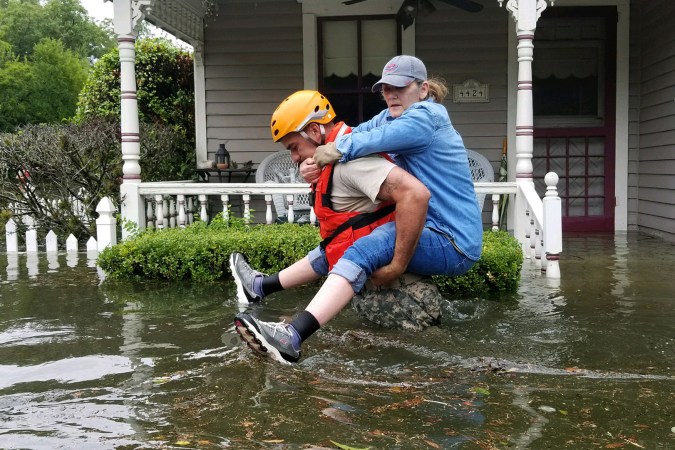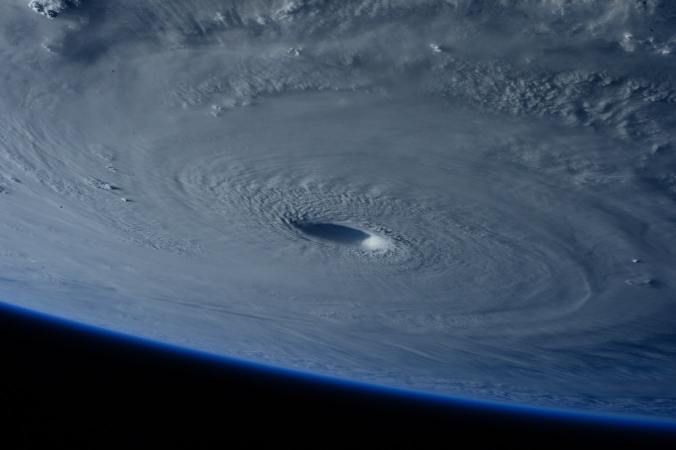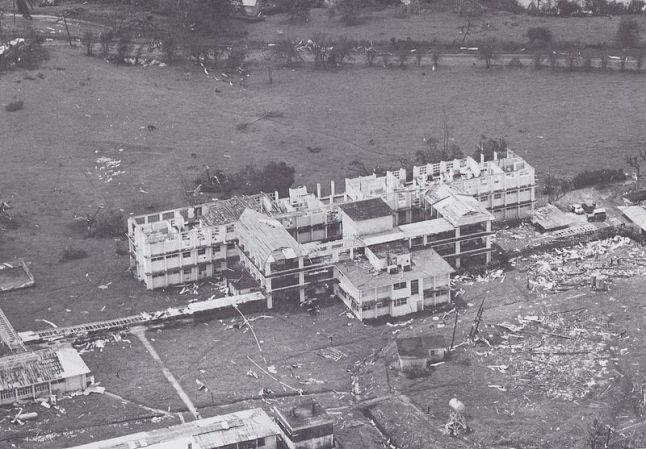

Hurricane Dorian is only now inching up the coast of Florida, a few dozen miles offshore, after days spent battering the Bahamas with Category 5 winds and devastating storm surge. The cyclone has been in the news for nearly a week, since the National Hurricane Center first saw it start to strengthen into a major storm.
Improved forecasting technology can predict hurricanes and their potential path far in advance, which can be helpful for large scale preparations. But that leaves people in the path of a hurricane with days to await its arrival—and even though experts are better than ever at predicting where a storm will go, there’s still a lot of uncertainty until only a day or so in advance. This long lead time, coupled with the unpredictability, can affect how people prepare for and experience a storm.
“When they’re feeling worried or uncertain, people tend to spend more time consuming media about those events,” says Rebecca Thompson, who studies collective traumas, particularly natural disasters, at the University of California, Irvine. “We also know that spending more time, especially when people are being consumed by coverage, isn’t actually helpful—it does more harm than good.” People who spend several hours a day watching coverage in the lead up to a major storm are more likely to have symptoms of post-traumatic stress disorder afterwards, even if they don’t end up being seriously affected by it.
While she hasn’t studied it specifically, Thompson expects that learning about a potential storm earlier could exacerbate that pattern. “Based on what we know, having more time to think about it would only give them more time to worry,” she says.
People often start to prepare for superstorms just as the weather events make the news, even if they are still days away from striking distance, says Robert Meyer, co-director of the Risk Management and Decision Processes Center at the Wharton School of the University of Pennsylvania. “Technically, there’s no real need to prepare before you’re told to prepare,” he says. “If there’s a hurricane watch, that’s the time to start getting things ready. There’s no particular need to do it so well in advance.”
Advance preparations might not sound like a problem, but that far in advance, the projected path of a hurricane is subject to change. Hurricane Dorian, for example, was first projected to run directly into Southern Florida and Palm Beach, but as the storm got closer, forecasts started to show it turning northwards and posing a threat to the Carolinas. People tend to believe the forecast well in advance of when they should, Meyer says.
“The downside of people preemptively reacting way before they need to, many days in advance, is that you get the wrong people preparing—which absorbs resources,” he says. It’s similar to the classic problem with evacuations: People who don’t have to leave evacuate, which clogs the roads and makes it harder for everyone to get out. “If you have a situation with a multiple days out forecast that the media is talking about, which has a high degree of error, you see missed preparation,” he says, and potentially run the risk of the wrong people taking up resources.
Florida saw that problem with Hurricane Irma in 2017: The storm was originally projected to hit Miami, but turned westward and had a bigger impact on the Tampa area. “People in Miami were super prepared, and had massive evacuations, which in hindsight probably weren’t necessary,” he says. “You had to do that far in advance to move that number of people, but you saw less on the west coast.” That doesn’t necessarily cause increased harm to the area eventually hit, though, because the more precise forecasts are still made in enough time. “There’s no evidence the people on the west coast were underprepared or harmed,” Meyer says.
The shifting track of a storm may also affect how people think about the risk it poses, or about their own safety, Thompson says. She’s currently studying that question in people who were living in Florida during Irma, and experienced the shifting track from Miami to Tampa. Her psychological data spans over 60 hours as the projected path changed. “We want to see how, over time, as the forecast changes, how what people say changes,” she says.
But overall, while spending days watching changing storm tracks and monitoring every report might seem helpful, that instinct can have negative repercussions, Thompson says. “Of course you want to stay informed,” she says. “You just have to try the best you can to not let it consume you.”















